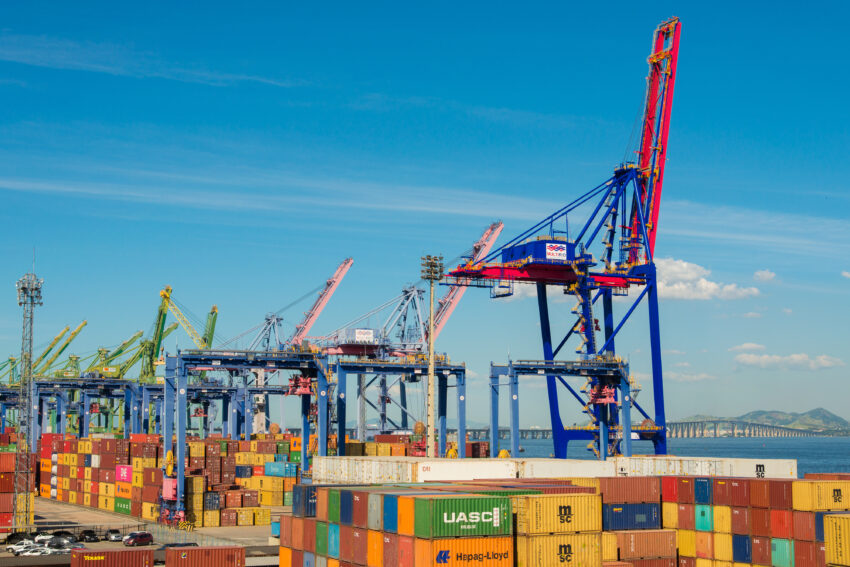Unlocking the ‘hidden middle’: Transforming food systems for a sustainable future
Global action on meeting the Paris Agreement is currently falling short. Focusing on this often-neglected segment of food value chains could effect significant change
Global food systems are at a critical juncture, with the world facing the dual challenge of ensuring food security and meeting climate commitments. With just 4 percent of climate finance allocated to the sector,[1] there is a stark mismatch between the need for accelerated decarbonization and investment. This must be resolved to meet the Paris Agreement targets and the Sustainable Development Goals (SDGs).
Today, much of the attention on realizing more secure, resilient and sustainable food systems is focused on farming – from crops to rearing animals – and on promoting healthy diets. However, the challenge of food systems transformation is far more complex and nuanced than this, requiring action across the entire agri-food value chain. This should include the often over-looked ‘hidden middle’, which sits between the farm gate and the end consumer. This segment plays a critical role in supply chain resilience and food security, having a tangible impact on the overall sustainability of food systems.
the challenge of food systems transformation is far more complex and nuanced than this, requiring action across the entire agri-food value chain
Unlocking the hidden middle
Since the phrase ‘hidden middle’ was first coined by Dr Thomas Reardon in 2015,[2] its use has expanded to include the entirety of the midstream segment of global agricultural value chains. It includes[3] processing, logistics, storage, packaging and handling. These activities account for 18 percent of food-based emissions,[4] yet they support social stability and economic development by playing an essential role in delivering safe and nutritious food and account for up to 40 percent of the economic value-added in food systems.[5]
Unlocking the hidden middle of agrifood value chains offers a key opportunity to enable food system transformation. By efficiently converting more raw materials into consumable food products, the sector helps to avoid food loss and waste – which itself helps decarbonize the food system. It also supports economic development and social stability; disseminates key information on best practices; and helps create market certainty for farmers, which improves their livelihoods. This stability in turn allows farmers to invest in best practices, which can lead to greater on-farm efficiency.
By efficiently converting more raw materials into consumable food products, the sector helps to avoid food loss and waste – which itself helps decarbonize the food system
The critical crossroads
The planet is in crisis. According to the results of the Potsdam Institute for Climate Impact Research’s Planetary Health Check[6] revealed at this year’s Climate Week NYC, Earth is in a critical condition, requiring intensive care. This diagnosis is rooted in research exploring interconnected challenges such as climate change, biodiversity loss and pollution – with global food systems standing at a critical crossroads at the heart of these issues.
As the world grapples with the challenges of ensuring food security and meeting climate commitments, an urgent re-prioritization is required. Regulators and governments must take decisive action to incentivize access to safe and nutritious food while addressing environmental sustainability.
One effective pathway to achieve this transformation is through integrating comprehensive food systems policies in the revised nationally determined contributions (NDCs 3.0).
Rebalancing climate finance to increase and ‘ring fence’ investment and incentives across the full agri-food value chain – including in the hidden middle – is critical to stimulate momentum in food systems transformation and to simultaneously strengthen food security. This is particularly true for small and medium-sized enterprises, which account for most of the sector’s businesses.[7] By equipping food manufacturers with targeted national-level financial incentives, including grants and concessional loans, they can invest in new solutions that save greenhouse gas emissions, energy and water use, and help reduce food loss and waste. Equally important, they can opt for upgrading installed equipment, to optimize food production, while reducing resource use. Improving performance is vital for reaching sustainability goals, as a more efficient plant is a more sustainable plant, and a plant that reduces food loss and waste. As an example, a dairy factory in China has recently been recognized by the World Economic Forum as a sustainable “lighthouse factory”.[8] By implementing Industry 4.0 intelligent technologies throughout their operations, they have achieved remarkable results, including a 60 percent reduction in quality defects, which helps prevent food waste, and a 43 percent drop in energy consumption.

Looking ahead
As attention narrows to solving the world’s most pressing climate challenges at COP29, we are urging governments and industry to act now to unlock the hidden middle, which can – and must – play a crucial role in achieving the Paris Agreement ambitions and the SDGs. With progress to limit global warming to 1.5°C above pre-industrial levels by 2100 currently falling short, investments in climate mitigation and adaptation need to be where they have the greatest impact on transformation – namely food systems, including the hidden middle of the agrifood chain.
With progress to limit global warming to 1.5°C above pre-industrial levels by 2100 currently falling short, investments in climate mitigation and adaptation need to be where they have the greatest impact on transformation
Advanced food processing and packaging are essential to develop modern sustainable food systems and are proven enablers of a powerful transformation across the entirety of the chain. To achieve food systems transformation, the intersection between agriculture production and conversion to food availability needs to be as efficient as possible. It’s crucial that increased investment and incentives are integrated into every country’s NDCs 3.0 in 2025 to work toward this goal.
The evidence is compelling. The time to unlock the untapped potential of the hidden middle is now.
[1] WEF_Green_Returns_2023.pdf (weforum.org), page 3
[2] Reardon, Thomas. (2015). The hidden middle: The quiet revolution in the midstream of agrifood value chains in developing countries. Oxford Review of Economic Policy. 31. 10.1093/oxrep/grv011.
[3] The hidden middle refers to all activities from farm-gate to retail outlet: input provision (and credit supply), transport, processing, storage, logistics, packaging, wholesale and delivery to local market outlets, according to a recent definition by the UN’s Value Chain Analysis for Development (VCA4D).
[4] Reducing Food’s environmental impacts through producers and consumers, J Poore and T Nemecek, Science 2019, https://pubmed.ncbi.nlm.nih.gov/29853680/
[5] The hidden middle: the quiet revolution in the midstream of agrifood value chains in developing countries, Thomas Reardon, Oxford Review of Economic Policy, Volume 31, Issue 1, SPRING 2015, Pages 45–63, https://doi.org/10.1093/oxrep/grv011
[6] Potsdam Institute for Climate Impact Research (PIK), Planetary Health Check (PHC) – https://www.pik-potsdam.de/en/news/latest-news/earth-exceed-safe-limits-first-planetary-health-check-issues-red-alert
[7] Data & Trends EU Food and Drink Industry, 2023 Edition, https://www.fooddrinkeurope.eu/wp-content/uploads/2023/12/FoodDrinkEurope-Data-Trends-Report-2023-digital.pdf
[8] Mengniu awarded World Economic Forum ‘lighthouse factory’ status with help of Tetra Pak technology, 2024, https://www.tetrapak.com/about-tetra-pak/news-and-events/newsarchive/Mengniu-wins-World-Economic-Forum-Lighthouse-certification-with-Tetra-Pak-technology
What's Your Reaction?


























:quality(85):upscale()/2025/02/27/808/n/1922398/26784cf967c0adcd4c0950.54527747_.jpg)
:quality(85):upscale()/2025/02/03/788/n/1922283/010b439467a1031f886f32.95387981_.jpg)
:quality(85):upscale()/2025/01/08/844/n/1922398/cde2aeac677eceef03f2d1.00424146_.jpg)
:quality(85):upscale()/2024/11/27/891/n/1922398/123acea767477facdac4d4.08554212_.jpg)













